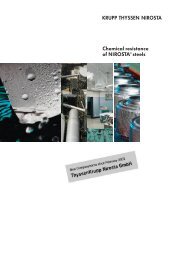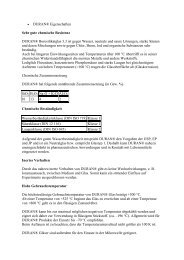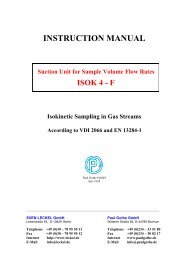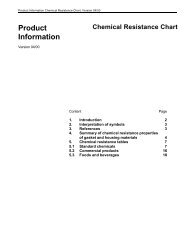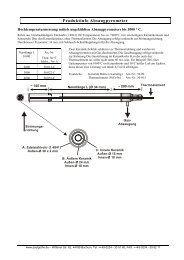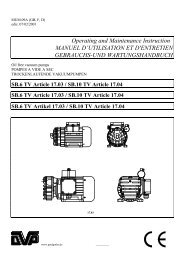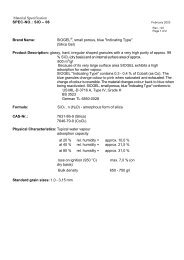Dust-Measurement - Paul Gothe GmbH
Dust-Measurement - Paul Gothe GmbH
Dust-Measurement - Paul Gothe GmbH
Create successful ePaper yourself
Turn your PDF publications into a flip-book with our unique Google optimized e-Paper software.
Seal up the opening of the access port in order to minimise air ingress in the duct or exposure of operators to toxic<br />
gases;<br />
c) turn the sampling probe until the entry nozzle is facing upstream within ± 10°, open the shut off valve, start the suction<br />
device and adjust the flow rate in order to obtain isokinetic sampling within –5 % and +15 %;<br />
d) the sampling duration at each selected point shall be identical;<br />
e) the total sampling duration shall be at least 30 min;<br />
f) during sampling, check at least every 5 min and adjust the flow rate for isokinetic sampling within –5 % and + 15 %.<br />
Continuously monitor, or record at least every 5 min, the dynamic pressure measured by the Pitot tube or another<br />
suitable measurement system either installed at the fixed point or mounted on the sampling equipment;<br />
g) do not stop sampling when moving the sampling train to the following sampling point, and immediately adjust the flow<br />
rate for isokinetic conditions;<br />
h) record the sampling time and sampled volume or flow rate at each sampling point;<br />
i) on completion of sampling at all the selected points of the sampling line, close the shut off valve and suction device,<br />
remove the sampling train from the duct and reposition it on the next sampling line;<br />
j) on completion of sampling run at all points:<br />
1) remove the sample train after closing the shut off valve and suction device;<br />
2) leak check the equipment if leakage has not been monitored during sampling;<br />
3) dismantle the sampling equipment and check visually the filter and the filter holder, for signs of breakage or stains<br />
due to pressure or to the concentration of moisture (sampling equipment operated below or too close the dew<br />
point). In such cases, the test is not valid. Check also non uniform distribution of dust on the filter.<br />
k) measure and record the barometric pressure.<br />
l) put the parts to be weighed in a closed electrostatic free container for transport to laboratory for weighing.<br />
Recovery of deposits upstream of the filter<br />
All the non weighed parts upstream of the filter which are in contact with the gas sample shall be rinsed to recover the<br />
deposits unless the quantification of possible deposits is not required.<br />
Special care has to be taken to avoid contamination if the rinsing is done on site. Rinsing shall be done in<br />
accordance with the following procedure:<br />
a) rinse the nozzle, elbow and the other parts upstream of the filter carefully with water into a storage container, taking<br />
care that nothing from the outside may fall into the container. The procedure is repeated with a second rinsing of<br />
water followed by acetone into the same container;<br />
b) to rinse the suction tube seal one end and fill enough water to wet and clean the inner surface (1/3 to 1/2 of the volume<br />
of the suction tube) and then seal the other end. The tube is cleaned by rotating and tilting several times. Transfer the<br />
solution to the transport storage container. The procedure is repeated with a second rinsing of water followed by<br />
acetone into the same container.<br />
12



